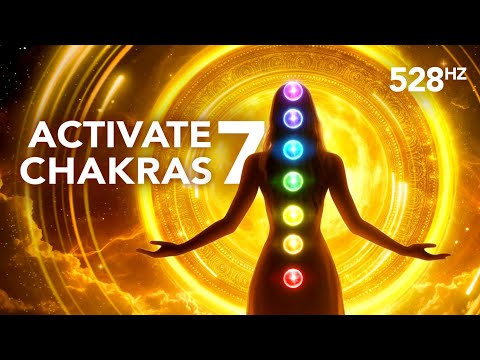
When stress starts to weigh you down, coincidentally, there are three yoga poses that can offer relief right in the comfort of your home.
Imagine melting away tension as you gracefully move through each pose, finding a sense of calm within your busy day.
These poses not only help relax your body but also quiet your mind, providing a sanctuary of peace amidst life’s chaos.
So, are you ready to discover the transformative power of these yoga poses and embrace a more serene way of being?
Key Takeaways
- Stick Pose, Corpse Pose, and Reclining Bound Angle are top yoga poses for stress relief at home.
- Incorporate these poses daily for relaxation, flexibility, and mental calmness.
- Create a peaceful space, follow guided sessions, and unwind with consistent practice.
- Prioritize safety with proper warm-up, alignment, and listening to your body’s limits.
Stick Pose (Yastikasana)
To practice the Stick Pose (Yastikasana) for stress relief at home, begin by lying down straight on your back. This pose is excellent for stretching your entire body, promoting relaxation from your toes to your fingertips.
As you settle into the posture, focus on elongating your spine, which helps improve your posture and release tension that may have built up throughout the day. Feel the gentle stretch in your muscles as you breathe deeply, allowing your body to soften into the pose.
The Stick Pose is a great way to enhance flexibility while calming your mind in the comfort of your home.
Corpse Pose (Savasana)
Lie comfortably on your back, arms resting gently at your sides with palms facing up, as you prepare to enter the deeply relaxing state of Corpse Pose (Savasana). Savasana is a powerful yoga pose known for its stress-relieving benefits. As you settle into this posture, focus on deep breathing to release tension and promote relaxation. Allow your body to sink into the ground, feeling a sense of peace and tranquility wash over you. Embrace the stillness of Savasana as it calms your mind and reduces anxiety levels.
This pose isn’t just about physical relaxation but also about mental serenity. By practicing Savasana regularly, you can enhance mindfulness and improve your overall well-being. Savasana helps lower blood pressure and quiet the noise in your mind, fostering a state of deep relaxation. So, take this time for yourself, let go of any worries, and bask in the peacefulness that Savasana brings.
Reclining Bound Angle With Bolster (Supta Baddha Konasana)
Enhance your relaxation practice with the restorative yoga pose known as Reclining Bound Angle With Bolster (Supta Baddha Konasana).
This pose is a soothing way to relax your body and calm your mind. By lying on your back with the soles of your feet together and supported by a bolster, you can gently open your hips and chest, releasing tension and promoting deep relaxation.
The bolster not only provides comfort but also allows for a subtle stretch in your inner thighs and groins, aiding in loosening tight muscles.
Regular practice of Supta Baddha Konasana can help reduce stress, anxiety, and fatigue, contributing to your overall well-being. Remember to breathe deeply and listen to your body while holding this pose to ensure you feel the full benefits.
Embrace the tranquility and relief that Reclining Bound Angle With Bolster offers for a rejuvenated body and a peaceful mind.
Legs Up the Wall Pose (Viparita Karani)
When practicing Legs Up the Wall Pose (Viparita Karani), you can experience a soothing release of tension in your legs and a calming effect on your mind.
This restorative pose is beneficial for promoting relaxation and reducing stress by improving circulation and lymphatic drainage.
Remember to practice safely, and enjoy the benefits of this pose for overall stress relief and rejuvenation.
Benefits of Viparita Karani
Experience the stress-relieving benefits of Viparita Karani, also known as the Legs Up the Wall Pose. This pose promotes relaxation, calming the nervous system to reduce anxiety and fatigue.
By elevating your legs above your heart, Viparita Karani enhances circulation and blood flow throughout your body. It can aid in alleviating insomnia, headaches, and mild depression.
Regular practice of this pose enhances overall well-being, promoting relaxation and reducing the impact of stress on your body and mind. Embrace the soothing effects of Viparita Karani to nurture your body and mind, fostering a sense of calm and balance in your daily life.
Tips for Practicing Safely
To practice the Legs Up the Wall Pose (Viparita Karani) safely, ensure your hips are positioned close to the wall and your legs are straight up to maximize its benefits.
Use a blanket or cushion under your lower back for added support and comfort. Relax your shoulders to release tension and focus on your breath, allowing your body to surrender to gravity for a calming effect.
Hold the pose for 5-10 minutes to fully experience its restorative benefits for stress relief at home. Remember that proper hip placement and straight legs are essential for a safe and effective practice.
Embrace the stillness and let go of any worries as you bask in the soothing effects of this pose.
Rag Doll Pose (Uttanasana Variation)
For a soothing release of tension and stress in your body, try the Rag Doll Pose (Uttanasana Variation). This gentle forward fold targets the spine and hamstrings, providing a deep stretch to alleviate stiffness and promote relaxation.
To fully experience the benefits of this pose, follow these steps:
- Grab Opposite Elbows: While in a standing position, slowly hinge at the hips and let your upper body hang heavy. Reach for opposite elbows to encourage a deeper stretch in the back and hamstrings.
- Relieve Stress: Focus on breathing deeply as you hold the pose, allowing the tension in your body to melt away. This posture is excellent for calming the mind and releasing accumulated stress.
- Improve Circulation: The inverted nature of Rag Doll Pose helps boost blood flow throughout your body, promoting a sense of rejuvenation and well-being. Practice this variation at home to unwind, surrender to the stretch, and nurture your body and mind.
One-Legged Seated Forward Bend (Janu Shirasasana)
Feeling stressed? Let’s explore the benefits of One-Legged Seated Forward Bend (Janu Shirasasana) to calm your mind and body.
Learn the proper alignment tips and modifications that can make this pose accessible and soothing, especially if you’re new to yoga.
Take a moment to stretch, relax, and find peace within with this gentle seated forward bend.
Benefits of the Pose
Strengthening and stretching the hamstrings, calves, and lower back, the One-Legged Seated Forward Bend (Janu Shirasasana) promotes flexibility in the spine and induces relaxation throughout the body. This gentle pose offers a range of benefits that can help you feel more at ease and centered.
Here are some reasons why incorporating Janu Shirasasana into your routine can be beneficial:
- Enhances flexibility in the spine, promoting a sense of freedom and ease in movement.
- Aids in detoxification by stimulating the liver and kidneys, helping your body eliminate toxins.
- Reduces stress and anxiety levels, allowing you to experience a greater sense of calm and peace within.
Practice this pose regularly to experience these positive effects on your mind and body.
Proper Alignment Tips
Ease into the One-Legged Seated Forward Bend (Janu Shirasasana) by ensuring proper alignment through mindful positioning of your extended leg and foot. Sit with one leg extended and the other foot placed against the inner thigh. Keep the extended leg’s knee facing upwards and the foot flexed to protect your hamstrings.
As you fold forward at the hips in the seated forward bend, focus on lengthening your spine to maintain proper alignment. Engage your core muscles for stability and breathe deeply to release tension in your hamstrings and lower back.
If needed, use an alignment strap around your foot to enhance the stretch and support your alignment. Practice with care and attention to detail for a safe and effective posture.
Modifications for Beginners
To enhance your experience in the One-Legged Seated Forward Bend (Janu Shirasasana) as a beginner, consider using a strap or towel to assist in reaching your foot if flexibility is limited. Here are some modifications you can make to ensure a safe and effective practice:
- Bend the knee of the extended leg for added support and comfort.
- Place a folded blanket under the bent knee to reduce strain on the hamstring.
- Use props like blocks under your hands to maintain proper alignment and avoid rounding your back.
Remember to focus on gentle stretching, breathe deeply, and allow yourself to relax into the pose. With time and practice, you’ll gradually improve your flexibility and find more comfort in the posture.
Revolved Abdomen Pose (Jathara Parivartanasana)
Lie on your back and gently twist your torso to practice the Revolved Abdomen Pose (Jathara Parivartanasana). This pose offers a myriad of benefits by massaging and detoxifying your internal organs. By aiding in digestion, relieving bloating, and stimulating your abdominal organs, it supports their optimal functioning.
Additionally, the Revolved Abdomen Pose helps improve spinal flexibility, release tension in the spine, and boost overall circulation. The gentle twisting motion can also assist in alleviating lower back pain and enhancing spinal health.
Regular practice of this pose not only promotes relaxation and reduces stress but also fosters a sense of balance within your body. Remember to breathe deeply and listen to your body’s limits while performing the Revolved Abdomen Pose to ensure a safe and calming experience.
How to Incorporate Yoga Into Your Daily Routine
Begin by incorporating yoga into your daily routine with simple and effective steps.
- Dedicate Time: Allocate just 10-15 minutes each day to practice stress-relieving yoga poses at home. This short but consistent effort can make a significant difference in your stress levels over time.
- Create a Peaceful Environment: Choose a quiet and comfortable space where you can focus solely on your yoga practice without any distractions. A serene environment can enhance the effectiveness of your routine and help you unwind.
- Utilize Guided Sessions: Access online resources or apps offering guided yoga sessions tailored for stress relief. These sessions can provide structure and support, making it easier for you to follow along and benefit from the practice.
Frequently Asked Questions
What Is the Best Yoga to Reduce Stress?
To reduce stress, try incorporating deep breathing, gentle stretches, and peaceful flows in your yoga practice. Mindful movement, grounding poses, and relaxation techniques can help calm your mind. Explore tranquil poses for a serene experience.
What Is the Most Relaxing Yoga Pose?
To find the most relaxing yoga pose, explore Corpse Pose (Savasana). This gentle stretch encourages deep breathing, mindful meditation, and stress reduction. Embrace its peaceful, restorative nature to enhance the mind-body connection and experience tranquil movements.
How to Release Stress From the Body Through Yoga?
To release stress through yoga, focus on deep breathing, gentle stretching, and grounding techniques. Connect mind and body, relax muscles, and practice meditation. Flow through movements to release stress, calm your mind, and find emotional balance.
Which Yoga Pose Is Best for Anxiety?
To alleviate anxiety, try Eagle Pose for focus and balance. Incorporate Extended Triangle Pose for peace and calmness. Legs Up the Wall Pose promotes relaxation. Child’s Pose calms the mind. Corpse Pose induces deep relaxation.
Conclusion
As you gently release into the calming embrace of Savasana, let the worries of the day fade away.
With Balasana, feel the tension melt from your body as you surrender to the soothing stretch.
And with Legs Up the Wall Pose, allow yourself to be enveloped in a sense of peace and tranquility.
Embrace these moments of stillness and find solace in the practice of yoga for stress relief at home.



